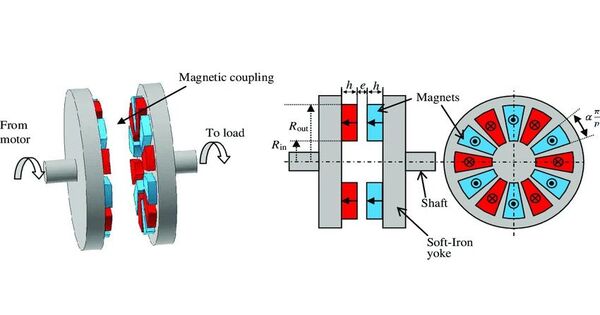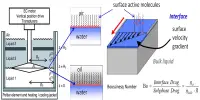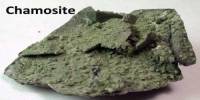Magnetic coupling is the technique of transferring energy from one magnetic field to another using induction. It is a component that transmits torque from one shaft to another using a magnetic field rather than a physical mechanical connection. This phenomena is frequently exploited in electrical and electronic applications, including transformers, inductors, and wireless power transmission systems. They are also referred to as magnetic drive couplings, magnetic shaft couplings, or magnetic disc couplings.
Magnetic couplings allow a physical separation between input and output shafts, precluding the use of shaft seals, which eventually wear out and fail from the sliding of two surfaces against each another. Magnetic couplings are also utilized for ease of maintenance in systems that need exact alignment, as they allow for more off-axis error between the motor and driven shaft than physical couplings. These are mostly utilized in liquid pumps, propeller systems, mine motors, conveyor belt motors, and kiln elevators.
Principles of Magnetic Coupling
- Magnetic Fields: When an electric current flows through a conductor, it generates a magnetic field around it. The strength and direction of this magnetic field depend on the magnitude and direction of the current.
- Induction: If another conductor is placed within this magnetic field, the changing magnetic field can induce a voltage in the second conductor. This is the basic principle of electromagnetic induction, discovered by Michael Faraday.
- Coupling Coefficient: The coupling coefficient, which varies from 0 to 1, determines how efficiently energy is transferred between the two conductors. A coupling coefficient of one denotes perfect connection, whereas 0 indicates no coupling.
- Mutual Inductance: This is a measure of how well the magnetic field of one coil produces a voltage in another coil. It is determined by parameters like as the number of turns in the coils, their area, the distance between them, and the presence of magnetic core material.
Applications
- Transformers: Transformers use magnetic coupling to transfer electrical energy between two or more coils (windings) without any direct electrical connection. This is achieved by placing the windings around a common magnetic core, allowing efficient energy transfer through mutual inductance.
- Wireless Power Transfer: In wireless charging systems, such as those used for electric vehicles and smartphones, magnetic coupling allows energy to be transferred from a charging pad to the device without physical connectors. This is typically achieved using resonant inductive coupling, where both the transmitter and receiver are tuned to the same resonant frequency.
- Inductive Sensors: Inductive sensors detect the presence or position of metallic objects by magnetic coupling. When a metal object approaches the sensor, it alters the inductive connection between the sensor’s coil and the target, hence changing the sensor’s electrical properties.
- Communication Systems: It is also utilized in several communication systems, especially near-field communication (NFC) and radio-frequency identification (RFID) technologies. These systems use inductive coupling between coils in the reader and tag to communicate information.
















